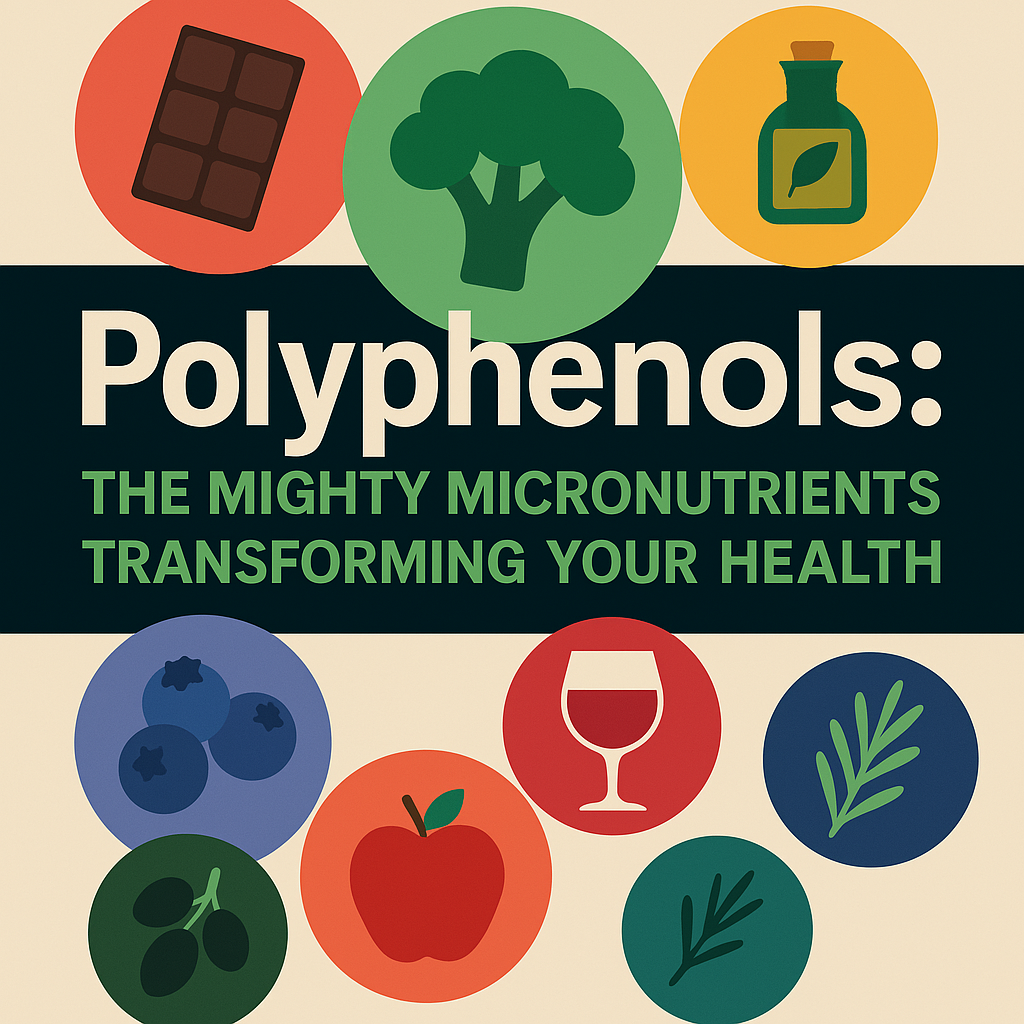
Polyphenols: The Mighty Micronutrients Transforming Your Health
In the world of nutrition, there’s a group of unsung heroes that deserve way more love: polyphenols. These powerful compounds found in fruits, veggies, herbs, tea, and more are doing serious heavy lifting for your body. From gut health to brain power, blood sugar to disease prevention.
So as a coach, I often remind clients: nutrition isn’t just about macros—micronutrients matter, too. Also, polyphenols are some of the most underrated players in that game.
Let’s break down what they are, where to find them, also how they can transform your health (and your clients’ results).
What Are Polyphenols?
So, polyphenols are plant-based micronutrients—over 8,000 different kinds, to be exact! Plants make them to protect themselves from stress (like UV rays or pests). When we eat those plants? Therefore we get the benefits, too.
They come in four main types:
-
Flavonoids, for example (apples, berries, onions, green tea)
-
Phenolic acids, for example (coffee, berries, whole grains)
-
Stilbenes, for example (red wine, grapes)
-
Lignans, for example (flaxseeds, sesame, whole grains)
How Polyphenols Benefit Your Body
1. Antioxidant Power
Polyphenols are antioxidant rockstars—fighting free radicals, reducing cell damage, and lowering inflammation. Also this helps protect against aging, heart disease, and cancer.
2. Heart Health
They lower LDL (“bad”) cholesterol, improve blood flow, and prevent cholesterol oxidation (a key cause of clogged arteries). Think: dark chocolate, red wine, and green tea.
3. Gut Health
Polyphenols feed your good gut bacteria (prebiotics), improving digestion, immunity, and even mental clarity.
4. Brain Boost
They cross the blood-brain barrier, reduce neuro inflammation, and stimulate the growth of new brain cells. So… blueberries, anyone?
5. Anti-Cancer Potential
Curcumin (from turmeric) and resveratrol (from red wine) have shown promise in slowing cancer cell growth and boosting the body’s ability to clear damaged cells.
6. Blood Sugar Control
Polyphenols improve insulin sensitivity and help manage blood sugar. Cinnamon, legumes, and green tea are your friends here.
Where to Find Polyphenols
Add these to your diet regularly:
-
Fruits: Berries, grapes, apples, pomegranate
-
Veggies: Spinach, broccoli, red onions
-
Drinks: Coffee, tea, red wine (moderation!)
-
Nuts & Seeds: Flax, walnuts, almonds
-
Herbs & Spices: Turmeric, oregano, cloves
-
Other: Dark chocolate, olive oil, whole grains
How to Maximize the Benefits
-
Eat the rainbow: Colour = variety of polyphenols
-
Pair with healthy fats (like olive oil) to boost absorption
-
Choose whole, minimally processed foods
-
Cook smart: Some polyphenols (like lycopene in tomatoes) become more available when cooked
Coaching Tip: Use Polyphenols in Your Nutrition Strategy
-
Firstly, better digestion
-
Reduced inflammation
-
Lastly, long-term, sustainable fat loss
Want to take it further inside Trainerize? So, try adding a habit tracker or tagging client meals with “polyphenol-rich foods” as a soft education tool. It sparks food awareness without overwhelming new clients.
The Future Is Bright (and Colourful)
In conclusion, polyphenols are the future of functional nutrition. Whether you’re supporting gut repair, hormonal balance, or cognitive performance—these compounds are game changers.
Vera Yazid



